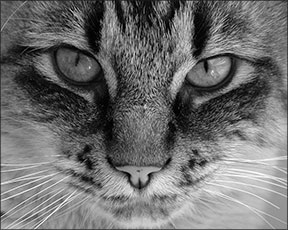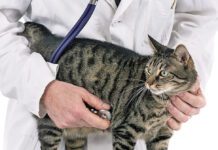Prevent Organ Rejection
Surgeons at the University of Georgia Veterinary Teaching Hospital have used a Siamese cat’s stem cells to improve acceptance of his kidney transplant. The recently announced surgery on 4-year-old Arthur, performed in May, is the hospital’s second successful kidney transplant using feline adult stem cells.

“To the best of our knowledge, UGA is the only veterinary facility in the world to use adult stem cells in feline kidney transplantation,” says Chad Schmiedt, DVM, ACVS, head of the feline kidney transplant program.
Arthur was diagnosed with chronic renal failure a year ago. Two other teaching hospitals passed on surgery because of potential complications, UGA says. One was that Arthur’s body couldn’t absorb enough of the immunosuppressant cyclosporine to prevent organ rejection.
Dr. Schmiedt suggested feline adult stem cells, known as mesenchymal stem cells or MSCs, as part of Arthur’s immunosuppressive treatment. “We used feline adult stem cells in one other transplant that we did last year,” says Dr. Schmiedt, who notes a growing body of studies suggesting that adult stem cell therapy may be beneficial in human renal transplant patients.
MSCs are derived from fat, bone marrow and neonatal tissues such as placenta and umbilical cord. Dr. Schmiedt harvested fat cells from Arthur, and the UGA Regenerative Medicine Service grew cells from the sample. Arthur’s transplant involved one surgery to harvest a kidney from the donor and another to transplant the donated kidney. The donor was a cat named Joey, and, as required by the transplant program, he was adopted by Arthur’s family.
Arthur continues to receive stem cell treatments from his veterinarian, and he takes a second antirejection medication, mycophenolate, to help his body accept his new kidney.
Transplantation costs range from $8,000 to $12,000 for the organ recipient and $3,000 for the donor, UGA says. Initial stem cell treatment is about $1,500, with most owners spending $1,000 to $3,000 a year for medications and recheck examinations.
Why They Hunt by Night
The unusual shape of cats’ eyes — the slit-shaped pupils — give them an evolutionary advantage as nocturnal hunters. “They can see in almost complete darkness,” says Richard E. Goldstein, DVM, ACVIM, Chief Medical Officer at the Animal Medical Center in New York City and a former Cornell faculty member.
“A cat can quickly adjust to different lighting conditions. Moreover, the slit shape protects the sensitive retina in daylight,” Dr. Goldstein told the New York Times.
“A cat has the capacity to alter the intensity of light falling on its retina 135-fold, compared to 10-fold in a human with a circular pupil. A cat’s eye has a large cornea, which allows more light into the eye, and a slit pupil can dilate more than a round pupil, allowing more light to enter in dark conditions.”
Cats have other visual advantages, he says, among them is the fact that their eyes face forward on the skull, providing wide binocular vision and depth perception to help catch prey. ❖
For more information, see “How Anatomy Shapes Their Sight” in the February 2014 issue of CatWatch.



